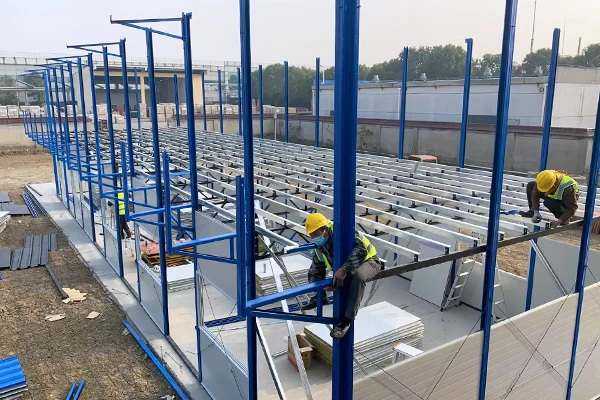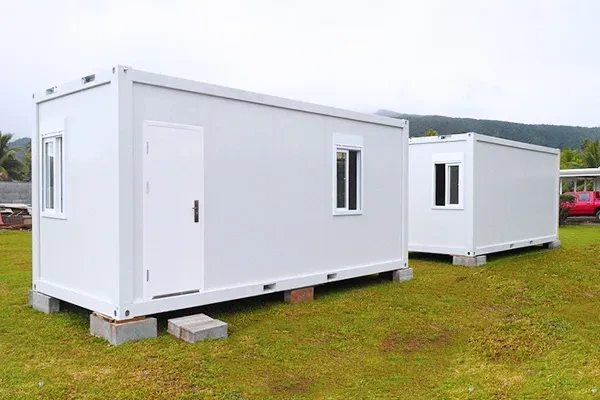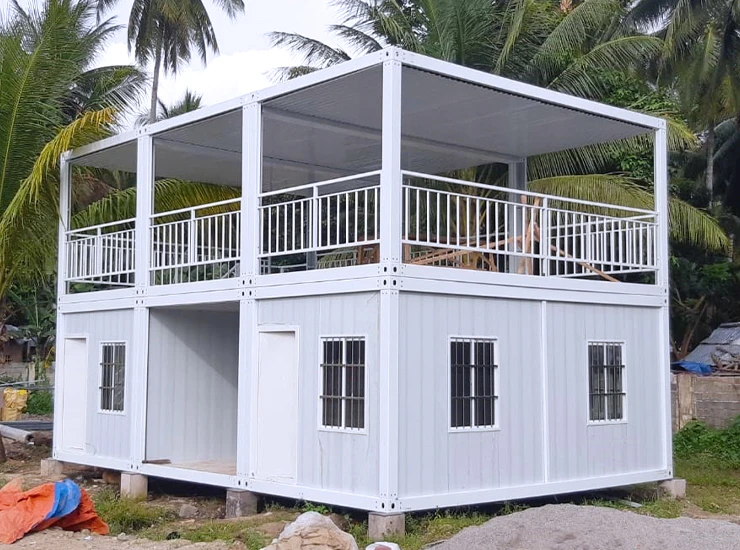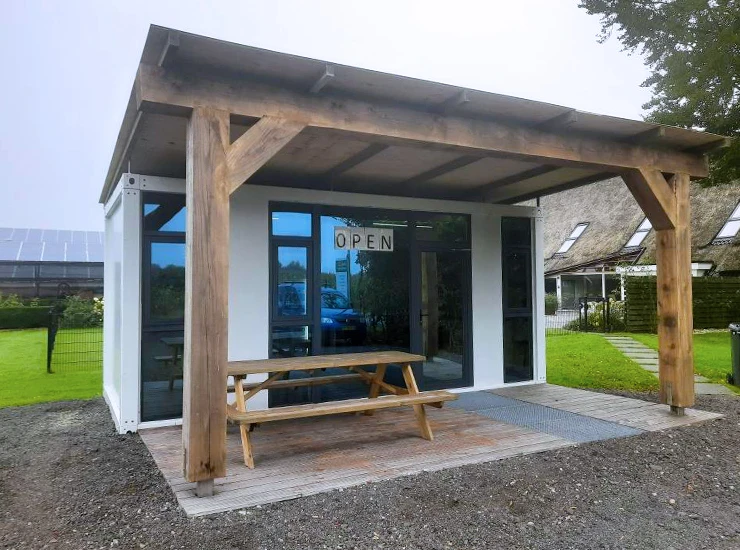How Can Smart Design Improve Privacy, HVAC Efficiency, and Sanitation in Temporary Living Quarters?
Do you have any experience working in a disaster recovery team?
Or, did you establish your own short-term housing facility when you were unable to stay in your permanent house?
If any answer to the questions is ‘yes’, then you have a complete idea about the importance of temporary living quarters. Short-term living places where many people live together when they become unable to stay in their regular house are termed as temporary living quarters (Thompson, 2025).
During emergencies, project construction or rural worksites, prompt accommodation is highly required, and temporary living quarters play a vital role in these situations. However, turning a steel structure into a comfortable environment that ensures safety, privacy, and hygiene necessitates meticulous design and implementation. Temporary living quarters may be used for disaster relief, deployment of the military, field-based camps, major infrastructure developments or in any mining sites. Regardless of the reason for the usage, smart temporary living quarters are generally designed to give a homey feel to the dwellers, as much as possible (Quarters, 2024).
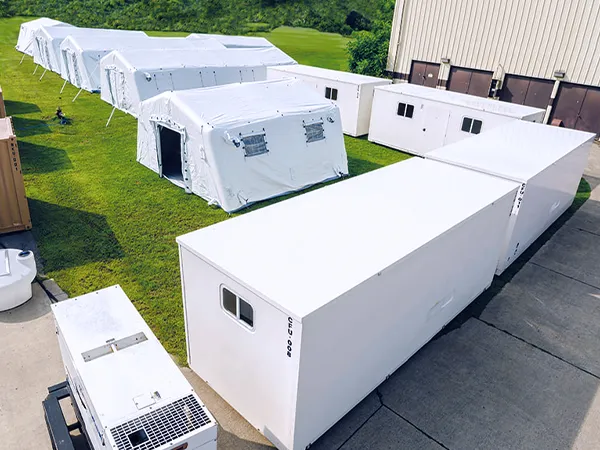 Fig-1: Temporary Living Quarters
Fig-1: Temporary Living Quarters
In this article, we are going to guide you to explore the main design concepts that turn these temporary living quarters into an inhabitable space, paying particular attention to privacy, HVAC and hygiene, the three main comfort and well-being pillars of humans.A
Comprehensive Overview of Temporary Living Quarters
Generally, temporary living quarters are modular-typed or mobile housing facilities which are designed to provide accommodations for individuals or groups of people for a short period of time. These quarters can be varied from prefab dorms and containerised houses to modular buildings or tented camps. The primary purpose of building temporary living quarters is to provide temporary shelters for some affected people where permanent housing facilities are not available or practical. These houses are comparatively lightweight, having a small footprint, and are very easy to carry and place, making them a flexible solution for rapid accommodation demand (SEAFOX, 2025).
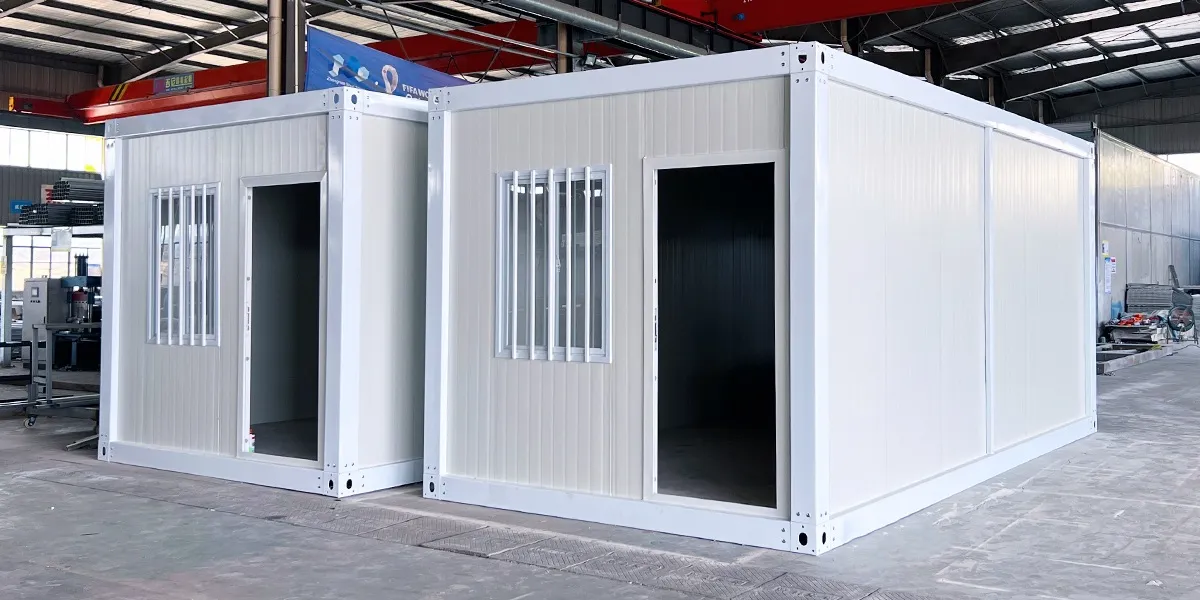 Fig-2: A sample house
Fig-2: A sample house
Applications Consist Of:
- Disaster relief housing for displaced communities;
- Construction and mining camps in remote areas;
- Event accommodations for large gatherings or festivals
The perfect designs of temporary living quarters strike a balance between durability, ease of deployment, and the comfort of the dwellers. At the same time, they are offered at reasonable prices, and they are environmentally friendly (Turner, 2015).
Why is Privacy so Important in Temporary Living Quarters?
The importance of privacy is often overlooked when it comes to the design of temporary living quarters. In some placements, the workers and the refugees have to live in a small space, and they need to compromise with their privacy. This phenomenon leads to psychological stress and discomfort. Forming personal-space zones mitigates temporary staying trauma and improves productivity, morale and mental state. It is to be noted that, whether concerning a new or refurbished house or a temporary living establishment, privacy remains the highest priority (Overtoom, 2022).
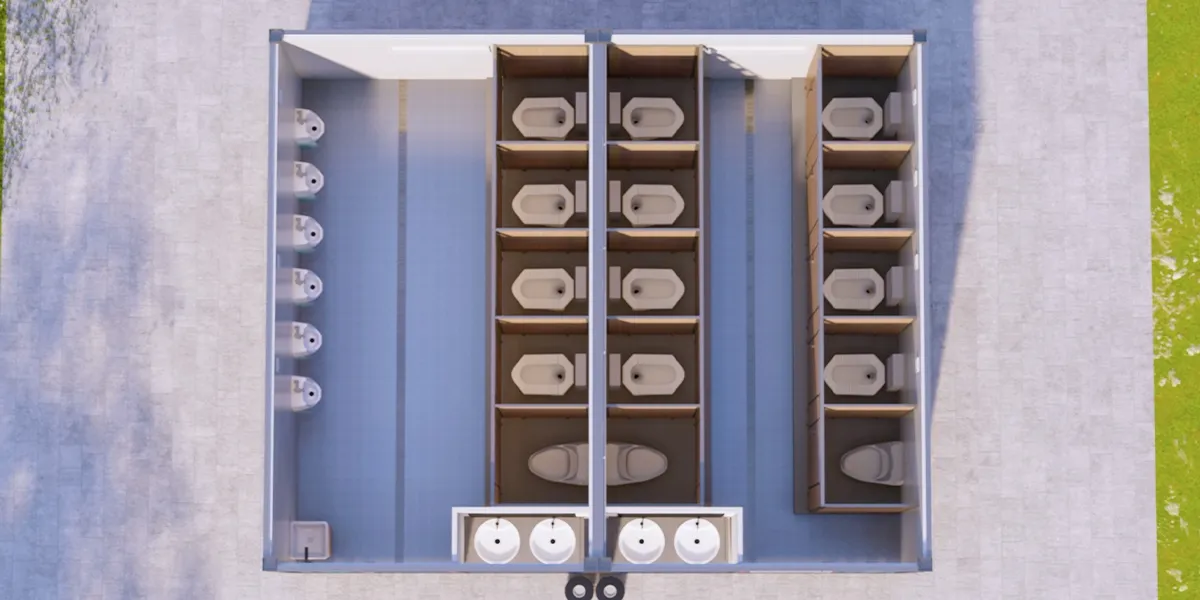 Fig-3: Privacy and sanitation are well-managed in these types of toilets
Fig-3: Privacy and sanitation are well-managed in these types of toilets
Approaches to Privacy Design Include:
Living in compacted environments and stuck in the same place for weeks, people can be triggered with a sense of lacking dignity when they want to enjoy a personal space in the temporary living quarters. If the integration of privacy is ensured in the design phase like designing single cabin or partitioned compartment may ensure privacy and dignity (SPACEWISE, 2025).
HVAC Systems: Ensuring Thermal Comfort and Air Quality
Regardless of the intended application, it is essential to take into account a suitable HVAC system at the time of designing temporary living quarters (IndustrialStructure, 2025). To maintain a comfortable, stable and healthy atmosphere in the indoor spaces is crucial in temporary living quarters. It becomes more challenging when the teams need to face extreme weather conditions. A well-organised HVAC system not just guarantees comfort but also energy efficiency, air quality and safeguards the residents.
 Fig-4: Typical influencing factors of the HVAC
Fig-4: Typical influencing factors of the HVAC
Essential Factors in HVAC:
- Temperature Control: Effective heating and cooling systems assist in preserving the optimal conditions throughout the year. Depending on the scale of temporary living quarters, either portable HVAC or centralized systems can be employed.
- Ventilation: A well-designed ventilation system averts mold development, unpleasant smells, and the accumulation of airborne ⦁ pathogens. In a design with multiple units, it is very necessary for each module to have a separate air-circulation system.
- Energy Efficiency: Solar panels, smart temperature controls, and insulated wall panels can help minimize energy consumption, which is very important for off-grid functioning.
- Filtration and Air Quality: The use of ⦁ HEPA ⦁ filters or ⦁ UV air-purification systems can promote better health and decrease the spread of respiratory diseases.
In disaster-affected or remote areas, HVAC systems should be resilient, easy to maintain and flexible enough to accommodate changing energy sources. Please note that, seeking comfort is not a luxury; it’s a factor directly related to productivity and health.
Sanitation: Human Dignity, Wellness and Hygiene
Sanitation facilities represent a very crucial aspect for comfortable temporary living quarters. Access to clean water, an effective waste management system, and proper personal hygiene are vital in preventing different types of contagious diseases, enhancing the quality of life during difficult situations. We need to remember that when we walk into a clean and fresh-smelling home, we get more relaxed (Vero's, 2025).
A Good Sanitation Design Consists of:
- Sufficient Toilets and Shower Features: Well-positioned toilets, showers and washbasins based on occupancy levels decrease waiting time and ensure standard hygiene.
- Wastewater Management and Disposal: Mobile sewage procedure, composting toilets, and ⦁ bio-digesters facilitate secure waste disposal, particularly in remote areas.
- Supply of Clean Water: The combination of an integrated water purification system with storage tanks ensures consistent availability of drinking water.
- Gender-oriented and Accessible Facilities: Dedicated spaces for men, women and individuals with physical disabilities enhance the inclusivity, harmony and safety.
Smart temporary living quarters frequently include modular toilet pods that can be quickly attached to the plumbing systems, thus minimizing the installation time and preserving sanitation standards, kind of similar to the permanent houses.
 Fig-5: What the affected communities need most in a nutshell
Fig-5: What the affected communities need most in a nutshell
Merging Functionality with Comfort
Experts opine that a mental health issue can complicate the ability in order to manage housing difficulties (Mindorg, 2024). Though the temporary living quarters are characteristically meant as short-term, it does not imply that they should not convey a sense of impermanence. The inclusion of carefully considered design elements can remarkably enhance comfort and promote physical and mental well-being.
Additional Design Suggestions:
- Natural Lighting: Artificial lighting is not a mood-boosting component. Rather, designing requisite windows may bring the home vibe to the residents.
- Ergonomic Furniture: Space-saving and cozy furniture encourages relaxation and uplifts productivity.
- Aesthetical Design: Calm environments are fostered by neutral tones, minimalistic clutter and the presence of greenery (even if it is artificial).
- Shared Environments: Common kitchens, social lounges or recreational areas encourage social connections and diminish the feeling of isolation.
Sustainability and Reusability
The method of implementing temporary living quarters reduces the consumption of waste and natural resources. Most of the houses are prefabricated and no destruction of planet earth is required to set them up. This method lessens environmental impact and takes on important responsibilities to uphold the long-term ecological balance (Kahvecioğlu & Selçuk, 2025).
Thus, temporary living quarters are being increasingly designed keeping sustainability in mind. Employing eco-friendly materials, renewable energy sources and modular systems that are capable of being reused and relocated which can reduce environmental effect and costs.
Sustainable Practices Include:
Sustainable practices of temporary living houses include the following:
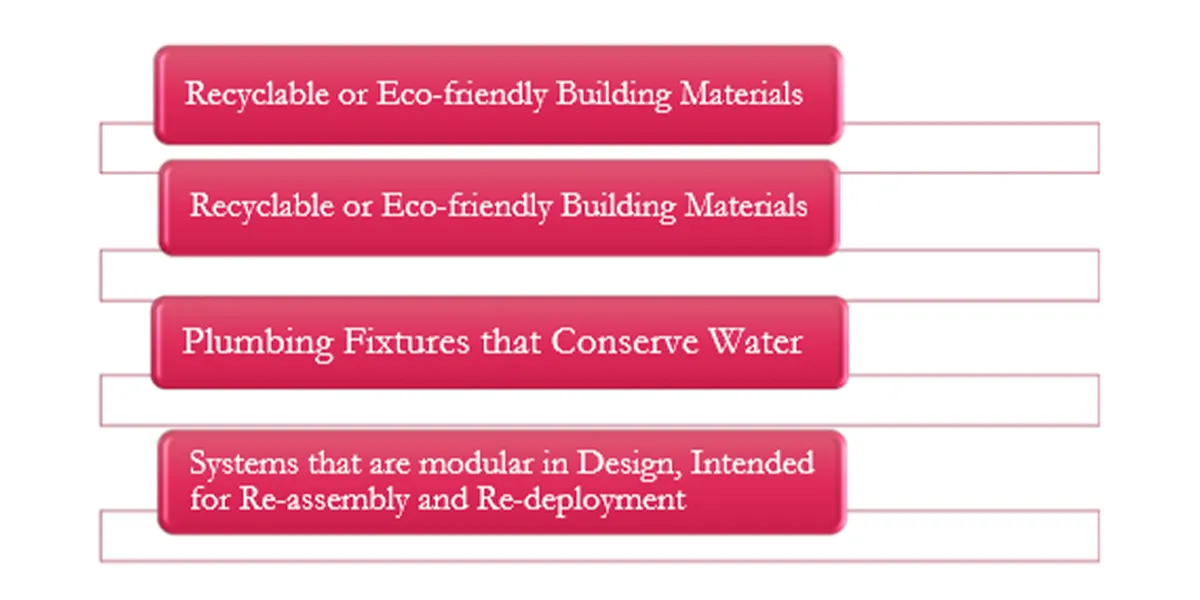 Fig-6: Applications of sustainable practices of temporary living houses
Fig-6: Applications of sustainable practices of temporary living houses
These qualities minimize operational costs and align with global sustainability targets, making temporary living quarters efficient and ethical.
Real Life Scenarios
A team of volunteers conducted a community survey to find the hygiene and sanitation status in a temporary shelter located in Jitpur, Ilam, Nepal, after the occurrence of an earthquake. The survey was mainly done in 100 distinct quarters and it was found that 50% of the residents have unsatisfactory conditions, 24% were satisfied and the rest were moderately satisfied. These 50% were more health-conscious as they were well-educated and smart young people. They were thinking to leave the community as many of their children were becoming sick due to the poor sanitation and HVAC systems. They also mentioned that they will suffer a lot financially and mentally if they leave the community but they have no options left considering the health condition of their children. They referred that they must stay in the temporary living quarters if the sanitation and HVAC procedures would be improved.
A survey again showed that, after implementing the proper sanitation system along with the upgrading the HVAC in a civil war-affected area of Congo, enhances the mental well-being and diminishes the trauma experienced by the residents.
The Prospect of Temporary Living Quarters
The advancement of modular construction, renewable energy and smart technology is reshaping the approach to design and implement temporary living quarters. The new generation of units includes IoT-enabled climate control, digital access system and self-sustaining energy grids.
Future designs will persist in emphasizing:
- The comfort of the residents and their mental wellness;
- Quick deployment without compromising on quality
- Flexibility to adjust in different weather conditions and applications
In the coming years, temporary living quarters will not only be used as emergency or remote housing, but they will certainly represent the standardization of efficient and human-oriented designs.
Conclusion
When we think about designing comfortable temporary living quarters, we think more than the basic of a mere shelter. Its all about the creation of an atmosphere that fulfils the human necessity of comfort, privacy and hygiene and it is eco-friendly, flexible and fast to deploy. Focusing on privacy, HVAC and sanitation, the developers of different projects, relief-providing institutions, and governments can assure that even temporary living quarters can be provided with safety, dignity and comfort. In the phase of uncertainty or transition, the perfect design can make a world of difference.
Here are some tips if you have made up your mind to purchase temporary living quarters:
Define your Purpose: At first, you need to define your project goals like, identifying the main purposes, the duration, the main dwellers, etc. Defining the goals at the very early stage will strengthen the entire process of establishing temporary living quarters.
Choose the Proper Material: Choosing the proper materials and their quality is very crucial. ZN House uses 2.5 mm certified steel as the frame which enables the temporary living quarters to fight against harsh weather.
Size and Layout: You need to decide what size of the modular houses do you require as the temporary living quarters, 20 ft or 40 ft. A well-sized quarter eases the installation process.
Tailoring Option: If your chosen temporary living quarters have customizable options, they are the best option. You can reuse or redeploy them for different purposes.
Transportation and Installation: Easy transportation and installation features can be very helpful for remote areas. Temporary living quarters need to be lightweight and prefabricated for easy carrying out from one place to another and for prompt installation.
Budget Friendly: You need to prepare a proper cost analysis and calculate the other related costs for establishing temporary living quarters. A well-documented financial analysis enhances the value of the project.
After-sales Service: Be aware of the warranty period and the scheduled maintenance service before buying the materials for temporary living quarters. Please remember that a very strong after-sales support reduces downtime.
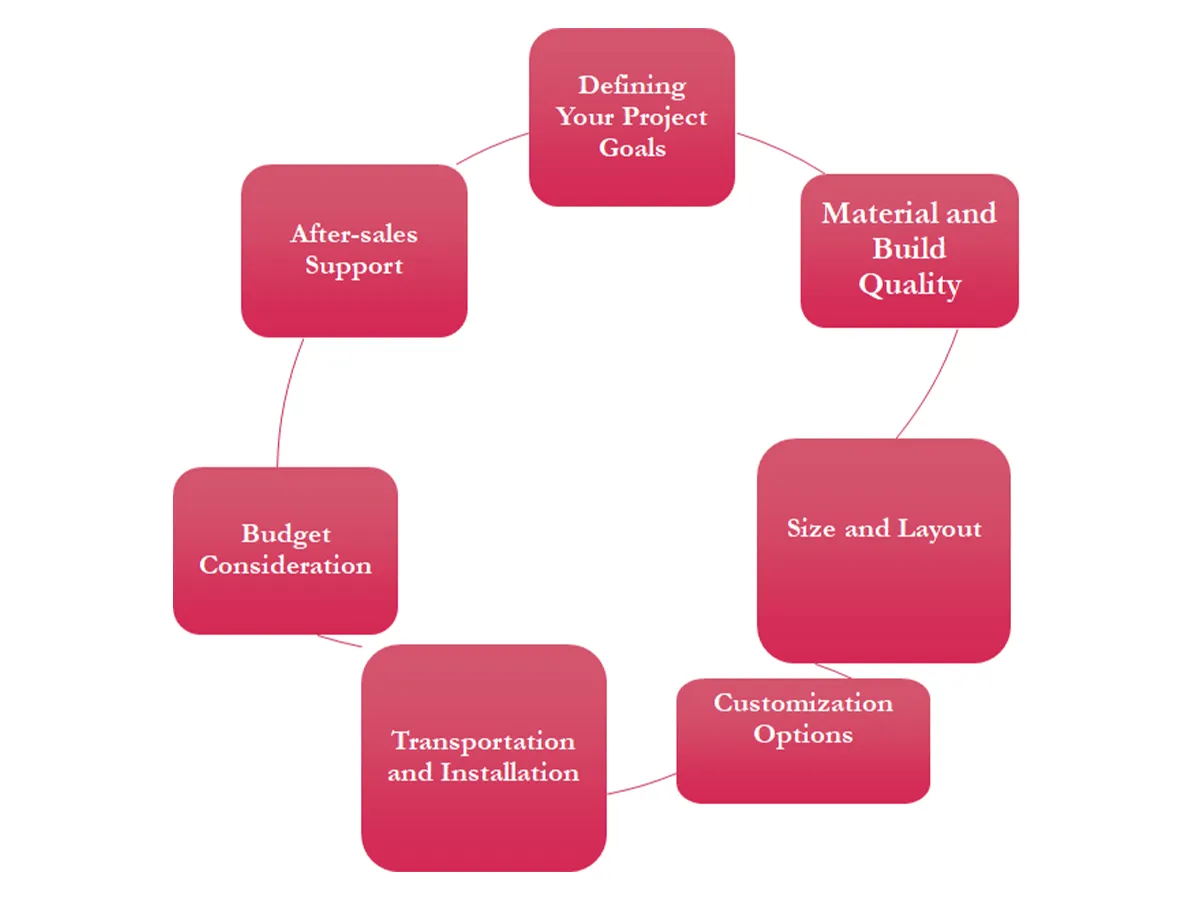 Fig-7: Tips for purchasing temporary living quarters
Fig-7: Tips for purchasing temporary living quarters
From the above discussion, it is clear to us that temporary living quarters need proper designs and implementations of those to make it livable for the impacted people. For further in-depth information, please knock us here.

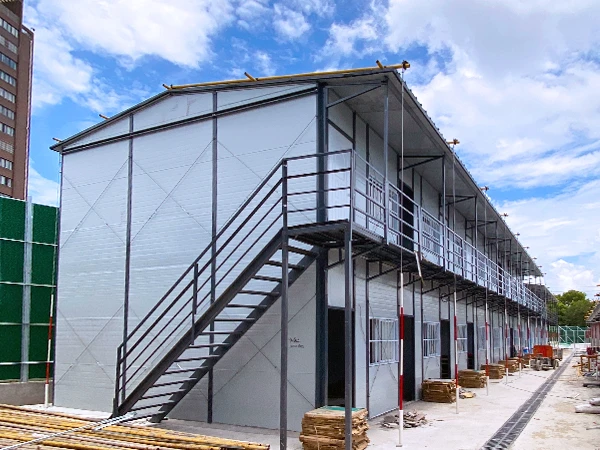
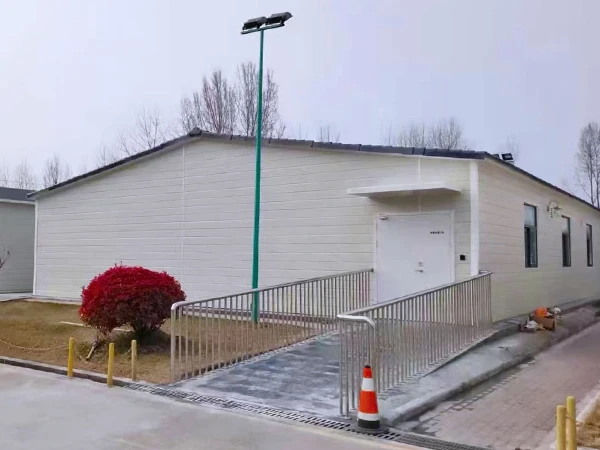





 Fig-1: Temporary Living Quarters
Fig-1: Temporary Living Quarters Fig-2: A sample house
Fig-2: A sample house Fig-3: Privacy and sanitation are well-managed in these types of toilets
Fig-3: Privacy and sanitation are well-managed in these types of toilets Fig-4: Typical influencing factors of the HVAC
Fig-4: Typical influencing factors of the HVAC Fig-5: What the affected communities need most in a nutshell
Fig-5: What the affected communities need most in a nutshell Fig-6: Applications of sustainable practices of temporary living houses
Fig-6: Applications of sustainable practices of temporary living houses Fig-7: Tips for purchasing temporary living quarters
Fig-7: Tips for purchasing temporary living quarters